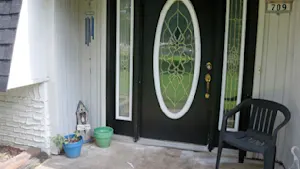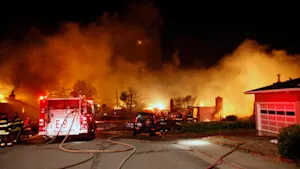More Stories
The man who posted a broad online threat against synagogues in New Jersey has been identified and was not planning to carry out a specific plot, a law enforcement official said Friday, relieving Jewish communities already unnerved amid an increasing climate of antisemitism and related violence.
The man, whose identity was not immediately released, was questioned by law enforcement and told agents he had been bullied in the past and harbored anger toward Jewish people, the official said.
Investigators do not believe the man had the means or motive to carry out any specific attack, according to the official, who could not discuss details publicly and spoke to The Associated Press on condition of anonymity.
The source of the threat “no longer poses a danger to the community,” the FBI in Newark tweeted.
New Jersey Attorney General Matt Platkin told the AP that he couldn’t comment on an ongoing investigation, including whether an arrest had been made. But he noted, like others, that concern is constant.
Incidents of bias and hate have been rising in New Jersey, said Platkin, who more broadly voiced concern about the impact of recent comments by Ye, formerly known as Kanye West, and a social media post shared by NBA star Kyrie Irving.
“Look, bias and hate are on the rise. Antisemitism is on the rise. White nationalism is on the rise, and a big reason why they’re on the rise is because people in positions of power and positions of status who have platforms are using those platforms to at a minimum condone, tolerate, accept statements and positions that are antisemitic,” said Platkin, a Democrat.
The FBI had said Thursday that it had received credible information about a “broad” threat to synagogues in New Jersey, a warning that prompted some municipalities to send extra police officers to guard houses of worship.
The nature of the threat was vague. The Newark FBI released a statement urging synagogues to “take all security precautions to protect your community and facility” but wouldn’t say anything about who made the threat or why.
“It raises the anxiety level,” said Jason Shames, leader of the Jewish Federation of Northern New Jersey. “This one for us was about vigilance. We keep having to say: See something, say something.”
Public warnings about nonspecific threats against Jewish institutions, made by groups including Christian supremacists and Islamist extremists, aren’t unusual in the New York City area, and many turn out to be false alarms.
But the area has also seen deadly attacks, including the firebombings of two synagogues and an attack on a rabbi's home in 2012, a fatal stabbing at a Hanukkah celebration in 2019, and a shooting in 2019 that killed three people in a kosher market and a police officer.
Outside the New York City region, the massacre that killed 11 people at the Tree of Life synagogue in Pittsburgh four years ago left an indelible mark.
“Jewish people all over, and particularly identifiable Jewish people, are concerned and worried,” said Chabad Rabbi Moshe Schapiro, director of Chabad of Hoboken and Jersey City. “We recognize that it’s not only, God forbid, if someone wants to or does something terrible. It comes back to saying something antisemitic. It has that trickle-down effect.”
Additional security will remain in Hoboken and Jersey City during weekend services beginning Friday, including private security and uniformed police officers, Schapiro said.
Individual Jewish communities need to decide what level of security is right for them, said Craig Fifer, a spokesperson for Secure Community Network, which advises Jewish communities on security.
“We encourage that people go ahead and live their Jewish lives,” Fifer said. “This really is a bigger conversation not tied to any one particular threat.”
More from News 12
1:31

What's Cooking: Uncle Giuseppe's Marketplace's prime rib roast
1:30

Looking for a road trip? Check out Big Snow at American Dream in East Rutherford
1:27

What's Cooking: Uncle Giuseppe's quiche lorraine
2:34

Guide: Safety tips to help prevent home burglaries
2:19

Guide: Safety measures to help prevent fires and how to escape one
2:36
